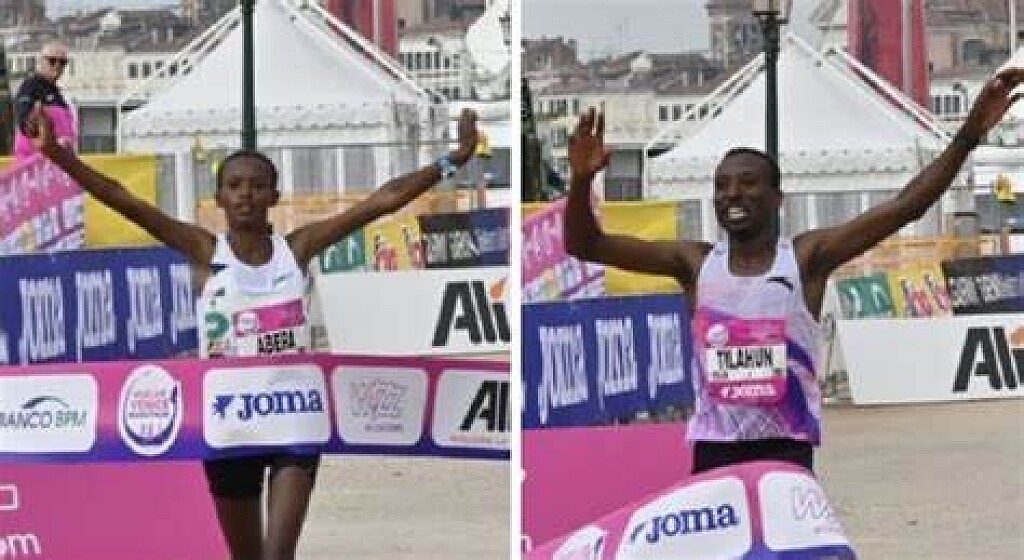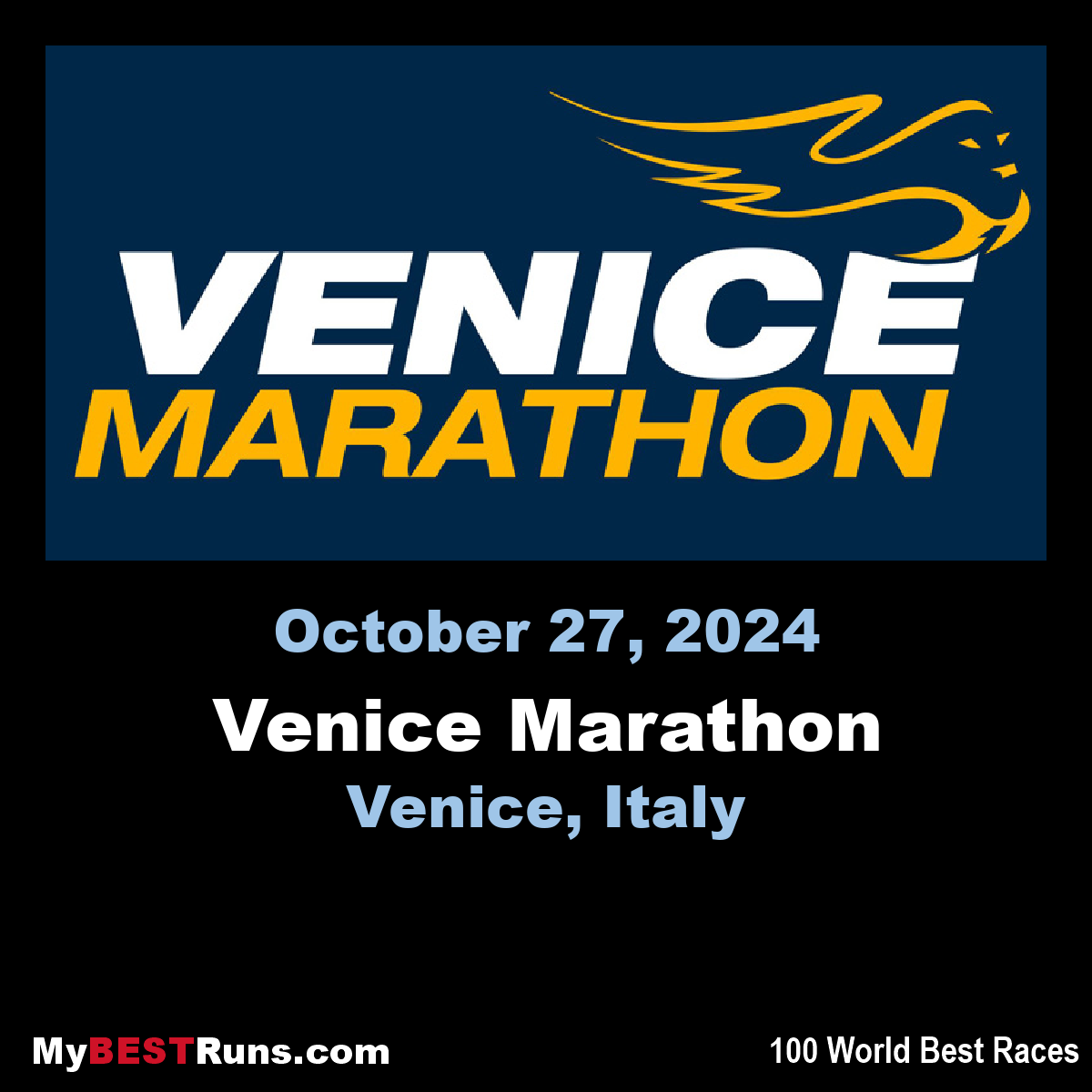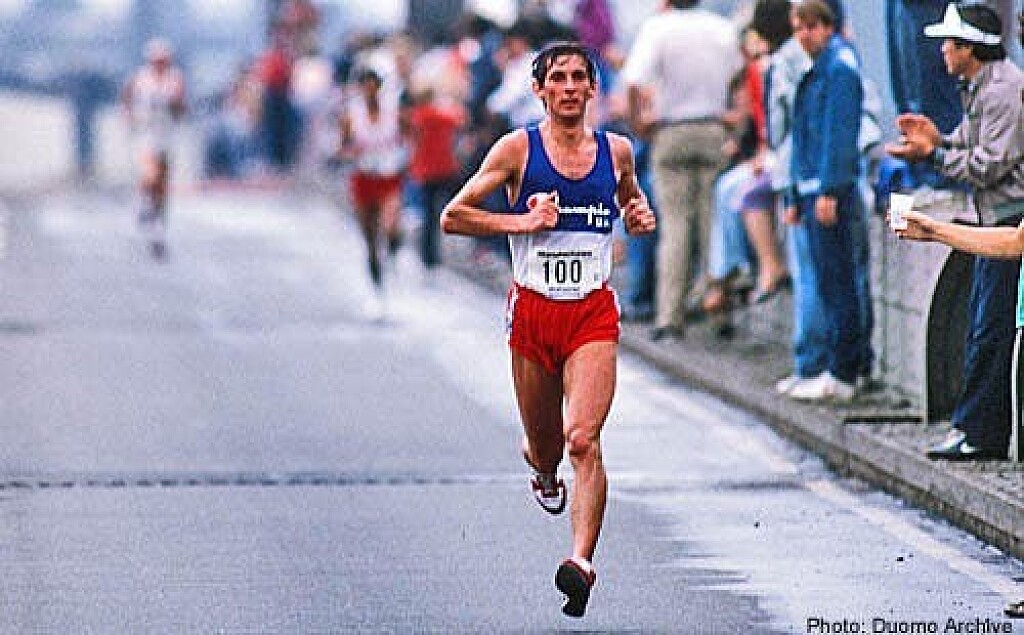Running News Daily
Running News Daily is edited by Bob Anderson. Send your news items to bob@mybestruns.com Advertising opportunities available. Train the Kenyan Way at KATA Kenya and Portugal owned and operated by Bob Anderson. Be sure to catch our movie A Long Run the movie KATA Running Camps and KATA Potato Farms - 31 now open in Kenya! https://kata.ke/
Index to Daily Posts · Sign Up For Updates · Run The World Feed
Articles tagged #Orlando Pizzolato
Today's Running News
Ethiopia dominates the 38th edition of the Wizz Air Venice marathon
It was a 38th Wizz Air Venicemarathon in the name of Ethiopia, with the victories of Abebe Tilahun (with a personal best of 2h09'08") among men, and the winning debut of Birtukan Abera (2h32'40") among women.
The men's race initially developed at a rather cautious pace (the group with all the best passed in 1h04'21" halfway through the race). The real selection was made after the 30th km, when there were 5 left, and especially at the beginning of the Ponte della Libertà, where Abebe Tilahun launched a decisive attack. The only one able to resist him was the Kenyan rookie Kipsambu Kimakal, who however could do nothing after a further stretch by Tilahun just before entering Venice. At that point, it was a triumphant catwalk for the Ethiopian rider, which allowed him to cross the finish line of Riva Sette Martiri amidst the jubilation of the crowd with a new personal best of 2h09'08". In second place came the Turkish Ilham Tanui Ozbilen (2h09'31") who overtook an exhausted Kipsambu Kimakal on the last bridge, who still finished the first marathon of his career in 2h09'41". "I am happy to have lowered my personal best in a race that is not easy and I am happy to have won a prestigious race like the Venice marathon" – these are the words of the winner.
Excellent was also the debut of the Italian Army Ahmed Ouhda, who thanks to a judicious race, managed to recover many positions in the final, finishing in seventh place with a good time of 2h13'00". "I am very happy with how I was able to manage the race – these are the words of Oudha – because I did what I had set out to do at the start: not to overdo it and try to run regularly both the first and second part of the race. It went well and I also really enjoyed this race: there was a lot of cheering everywhere that pushed me along all the route. Now that I've got a taste for it, I'm already thinking about the next marathon which could be the one in Seville at the beginning of 2025".
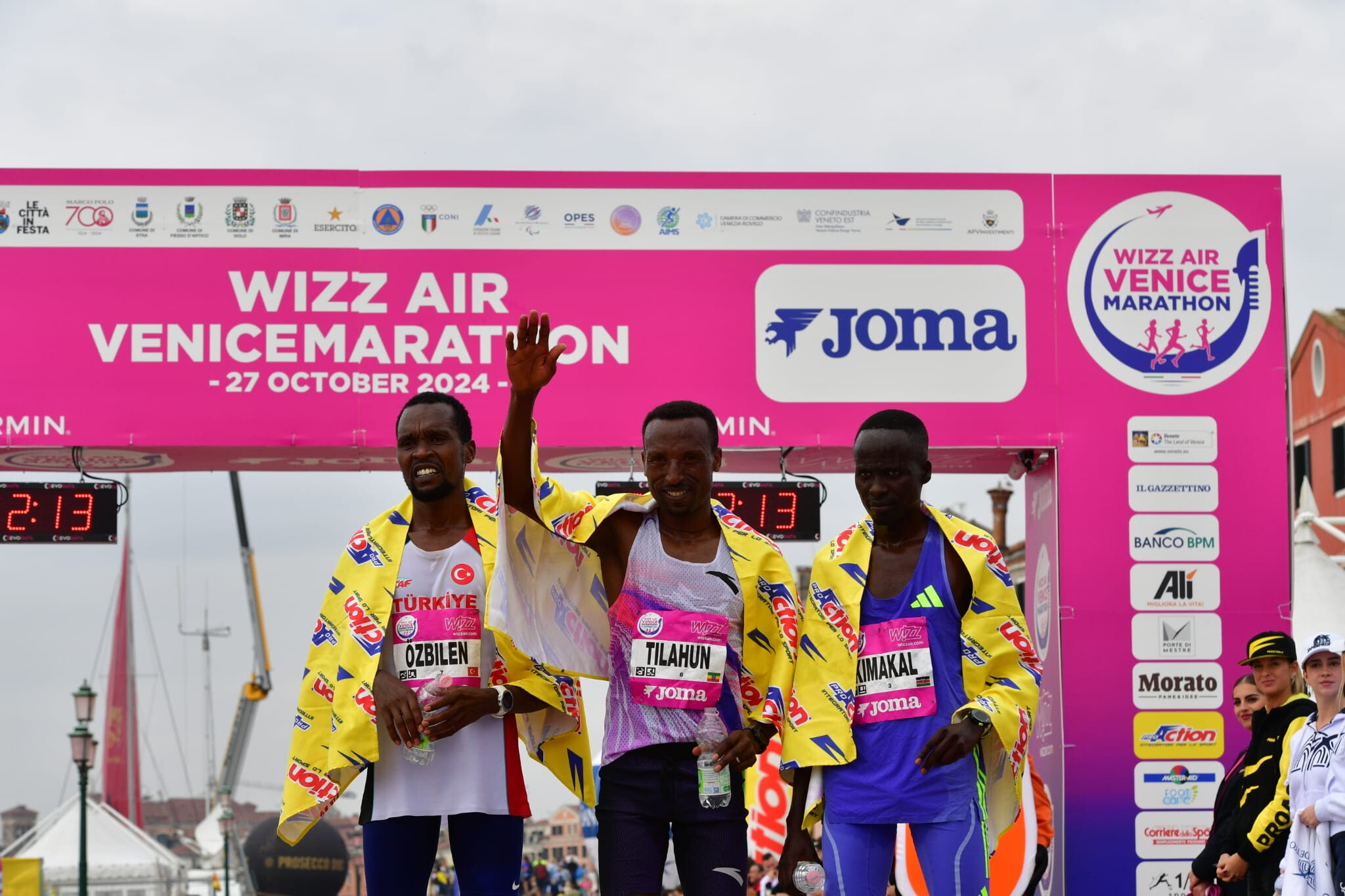
The women's race saw a trio made up of the Ethiopian Birtukan Abera and the Kenyans Carolin Jebet Korir and Betty Chepkorir in front from the start. At the refueling of the 20th km, Abera slowly began to stretch, well assisted by the hare that allowed her to pass at the 'half' in 1h13'30". The Ethiopian athlete continued his entire race alone, finally managing to cross the finish line in Riva Sette Martiri in 2h32'40" and thus celebrating his marathon debut with a splendid victory. "My marathon career is off to a good start and I'm delighted to have won today in Venice: a race that I enjoyed very much and in which I hope to return next year." Betty Chepkorir finished second in 2h33'23" while third came the Ethiopian Tesfahun Melkam in 2h39'01". The first Italian at the finish line was Sara Carducci (Atl. 85 Faenza), who finished her race in fifth place in 2h44'47".
With the victories of Tilahun and Abera, Ethiopia rises to 13 total successes at the Venice marathon, second only to Kenya (30).
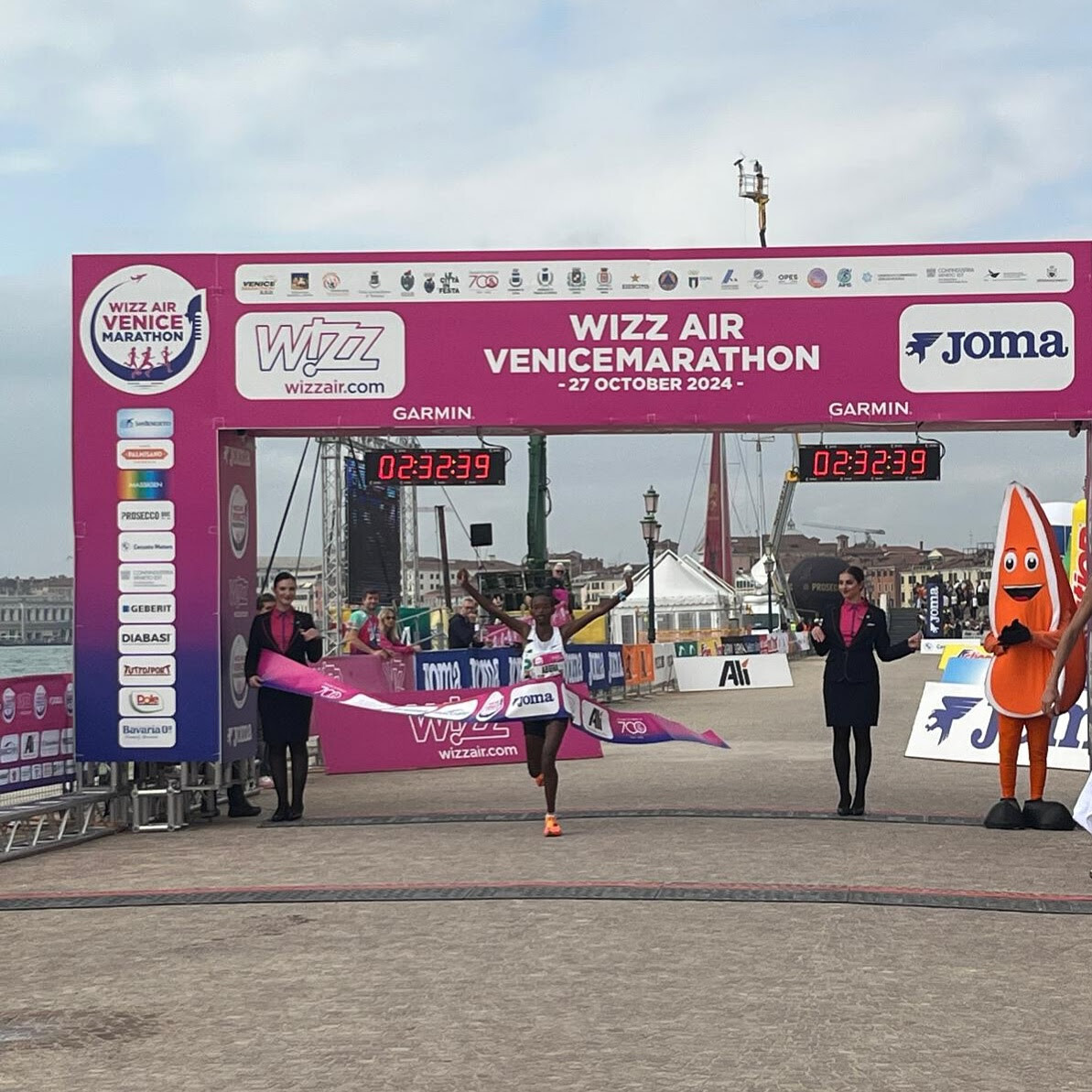
In the third edition of the VM Half Marathon, which started from Mestre with arrival in Riva Sette Martiri and saw the record participation of 4500 athletes, the first step of the podium for the triathlete Filippo Candeo (US Dolomitica) who won in 1h12'34". Among the women, the French Emilie Tissot sets the new record of the event, running in 1h18'47" ahead of the 2022 and 2023 winners Claudia Andrighettoni and Federica Panciera who thus repeats last year's third place. Tissot, who lives and trains in Strasbourg, has chosen to run in Venice also to discover the beauty of the city and the territory.
The VM 10 km, which started from the San Giuliano Park with arrival in Venice and which saw the record participation of 7,000 athletes, bears the signature of Orlando Pizzolato (whose 40th anniversary of his first victory at the New York Marathon occurs this year) with the second victory of his daughter Chiara Pizzolato who won among women in 39'37" and of the athlete he coaches Massimo Guerra (33'48"), both bearers of Atletica Vicentina.
Men's Marathon Ranking
1. Tilahun Abebe (Eth) 2h09'08"
2. Ilham Tanui Ozbilen (Tur) 2:09:31
3. Kipsambu Kimakal (Ken) 2:09:41
4. Abdenego Cheruiyot (Ken) 2h11'28"
5. Adugna Takele (Eth) 2h12'33"
6. Mohamed El Ghazouany (Mar) 2h12'44"
7. Ahmed Ouhda (Ita – CS Army) 2h13'00"
8. Asmerom Shumay (Eri) 2h14'06"
9. Ishmael Chelanga Kalale (Ken) 2h14'37"
10. Deresa Reta (Eth) 2h17'24"
Women's Marathon Ranking
1. Birtukan Abera (Eth) 2h32'40"
2. Betty Chepkorir (Ken) 2h33'23"
3. Tesfahun Melkam (Eth) 2h39'01"
4. Carolin Jebet Korir (Ken) 2:41:30
5. Sara Carducci (Ita – Atl. 85 Faenza) 2h44'47"
6. Ivana Iozzia (Ita – Corradini Rubiera) 2h45'22"
7. Federica Moroni (Ita – Dinamo Running) 2h49'13"
8. Szofia Malatinszky (Hun) 2h59'47"
9. Elisabetta Luchese (Ita – Runcard) 3h10'00"
10. Catherine Chaplin Scott (Gbr) 3:16:18
Login to leave a comment
Venice Marathon
The Venice Marathon is one of the most beautiful marathons known for the historical, artistic and picturesque surrounding in which it takes place. It starts in Stra, a small village located at about 25 km west of Venice, at the beginning of the Riviera del Brenta, a beautiful area near the River Brenta, where the rich and noble Venetians built...
more...Pizzolato donates 1984 New York City Marathon winning shoes to MOWA
At the end of ABC television’s coverage of the 1984 New York City Marathon, there’s a shot of Orlando Pizzolato sitting on a bench in Central Park, retying his well-worn footwear. “Those shoes may have had it,” remarked anchorman Jim McKay.
Not quite. Some 39 years on, the shoes that took the unheralded Italian to the biggest upset victory in the history of the Big Apple’s big race have been generously donated to the ever-expanding Heritage Collection in the Museum of World Athletics (MOWA).
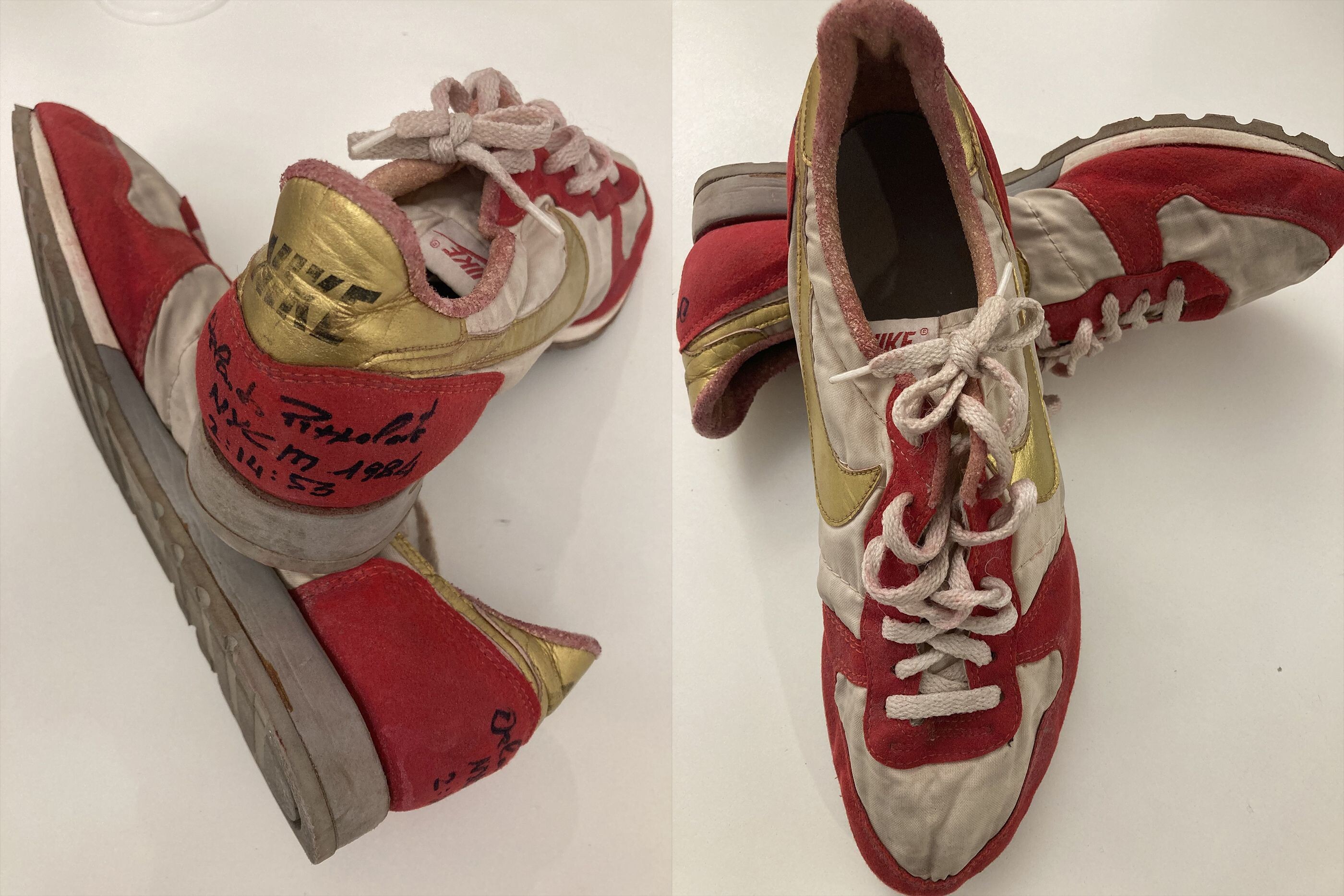
Whatever unfolds in the 2023 edition of the New York City Marathon this weekend, there’s unlikely to be anything as dramatic as the battle of attrition from which the plucky Pizzolato emerged as the unlikely hero in 1984.
As the Italian and the rest of the 18,000 field assembled for the start, it was difficult to pick out the contours of the Verrazano-Narrows Bridge. Such was the heat haze that had descended upon the Big Apple on the last Sunday in October that year.
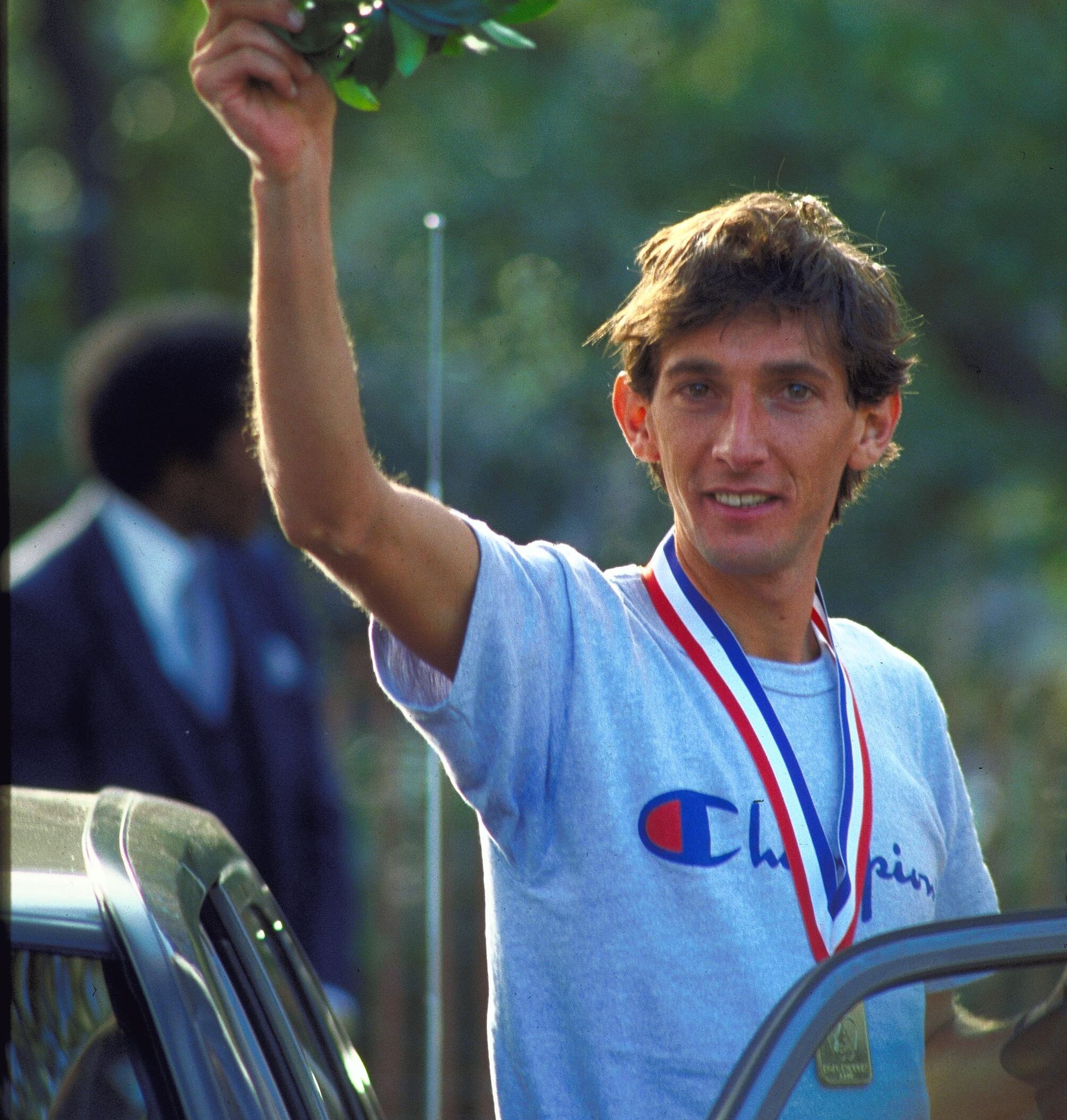
“The weather is going to be a huge factor,” proclaimed Marty Liquori, the great US miler, working as the expert summarizer on the men’s race for ABC Sports. “We’re looking at the hottest and most humid New York Marathon ever.”
The mercury was already pushing 70°F and the humidity was close to maximum.
“That causes two things to happen at the front of the pack,” continued Liquori, runner up to Miruts Yifter in the 5000m at the inaugural World Cup in Dusseldorf in 1977. “The natural front runners get conservative, so the pack stays tighter. The second thing is the hotter it gets, the greater chance there is for an upset.”
“Yes, look out for the man you do not know in this marathon,” predicted McKay, the distinguished Voice of ABC’s Wide World of Sports.
“This man could be for real”
Not a lot of people were looking out for the runner bearing race number 100, clad in the colors of his homeland – blue and white singlet, red shorts.
Pizzolato, a 26-year-old representing the University of Ferrara sports club from the north of Italy, was no Ferrari of a marathoner.
In seven attempts at the classic 26.2-mile distance, he boasted a best of 2:15:28 - more than seven minutes slower than the world record figures of 2:08:05 set by Welshman Steve Jones in Chicago a week before the 1984 New York race.
Pizzolato’s PB came in New York in 1983, the year Rod Dixon made up a half-mile deficit to overhaul Briton Geoff Smith virtually on the finish line in Central Park. The New Zealander’s winning time was 2:08:59. He finished 6min 29sec and 26 places ahead of Pizzolato.
Twelve months later, Dixon, the Olympic 1500m bronze medalist behind Finn Pekka Vasala and the trailblazing Kenyan Kip Keino in Munich in 1972, returned to New York as favorite for the men’s title – and the $25,000 prize and Mercedes Benz that went with it in that first year of open professional running.
“I’m a lot more confident in my own mind, having run successfully in ’83,” he told Liquori in a pre-race interview. “I think I’m rightly the favorite. I’ve trained well and I’ve got confidence in my own ability. I’ll go out and if I strike it right, they won’t catch me.”
Five miles in, given the exceptional conditions, Liquori and four-time winner Bill Rodgers, following the men’s race from ABC’s on-course buggy, felt Dixon was striking it right – 18 seconds down on home runners Pat Petersen and Terry Baker in a pack that included two-time Commonwealth gold medallist Gidamis Shahanga of Tanzania.
Pizzolato was also among the chasing group, seemingly unknown to any of the experts. His first name check came as he overtook Jose Gomez of Mexico to claim pole position, shortly before reaching halfway in 65:03.
“Could this, Marty, be the man they did not know?” McKay enquired.
“This man could be for real,” Liquori replied. “In the hotel I saw Franco Fava, a great steeplechaser from Italy, and he mentioned that it has been so hot in Italy this summer and fall. So, this is one person who is accustomed to the heat.”
Rodgers was not quite so sure. “I think it’s still anybody’s race,” he said. “The guy from Italy looks good. But we’ll have to see later in the race.”
“The Pope, Reagan and then it was me”
The guy from northern Italy was certainly looking good.
While Dixon seemed ill at ease, struggling to cope with the pace and the conditions some 1:15 behind, Pizzolato appeared to be feeling groovy as he crossed the Queensboro Bridge, the subject of Simon and Garfunkel’s 59th Street Bridge Song.
“Orlando looks very good,” Liquori observed. “He looks to have a style that’s fitting for a marathoner. When you’re looking around, taking in the scenery, you know that the running is coming easy.
“One thing should be pointed out. Steve Jones, who set the world record last week, was a very well-established track runner. He was eighth in the 10,000m at the Olympic Games.
“But Orlando has run a minute slower for 10,000m: 28:22. Were he to win this, it would be just about the biggest upset in a major marathon that I’ve seen.”
By the 20th mile mark, it was clear that Pizzolato himself was somewhat upset. The temperature had risen to 74 degrees and the humidity to 96%. His pace slowed to a 5:26 mile.
Briton Dave Murphy was gathering momentum, moving up into second, and Dixon into third.
“Well, I think we’re entering the last chapter of Orlando,” ventured Liquori. “I think I might have got too excited at 18 miles. Maybe it was the Italian in me.”
Soon after, Pizzolato grabbed his chest and slowed to a temporary halt. Three times he stopped, then started up again. “This man is in trouble,” said McKay.
Entering Central Park, with less than three miles to go, Pizzolato stopped for a fourth time. He clutched his chest, glugged half a cup of water and poured the other half over his head.
Dixon was out of the equation at this point, having stepped off the course suffering from cramps. But Murphy had closed to within 15 seconds.
“It’s like the tortoise and the hare,” said Liquori. “Pizzolato’s running-stopping, running-stopping. Murphy is just taking a steady course. It looks like it’s his race.
“For Pizzolato now, the drama now is how much of his soul he’s going to lay down.”
Thrice more, Pizzolato stopped and started, each time taking on fluid and calmly checking out the gap behind him. Somehow, he managed to lay down enough of his soul to bridge over his troubled water.
The finished line approached with Murphy not yet in sight.
“He has pulled it off,” Liquori pronounced. “He has mentally been able to fight through his form having gone to pieces, through having had so many problems.”
“It was very hot,” said Pizzolato, who crossed the line in 2:14:53, 43 sec ahead of Murphy. “I had cramp in my stomach. It was very terrible, but I am very happy.”
The New York Times the next day concentrated on Grete Waitz’s sixth success in the women’s section, praising Pizzolato in passing for having overcome the heat and the late challenge of Murphy in “a men’s competition that the stifling heat and humidity reduced to a battle of attrition.”
Back home in Italy, the reaction was different. “The first story in the news was the Pope,” Pizzolato reported, “then Ronald Reagan’s election. Then it was me.”
Retained title
Twelve months later, the guy from Italy returned to New York and proved he was no flash in the marathon pan.
This time he was the tortoise, running his steady race while Geoff Smith burned himself out at world record pace, then overtaking Djibouti’s World Cup Marathon winner Ahmad Saleh two miles from home to become the Big Apple’s first overseas two-time winner, clocking 2:11:34.
“Last year I won by mistake, probably,” Pizzolato told The New York Times. “This year was more exciting. I was not in confusion in the last 365 yards.
“All the people seemed to know my name and my number. It was like everyone was a friend of mine. It was a great source of power.”
In an era when the fast men of the track came to dominate the men’s marathon – with the likes of Jones, Dixon and Carlos Lopes, the Portuguese runner who won the Olympic title in Los Angeles in 1984 and succeeded Jones as world record-holder in 1985 – Pizzolato was a great source of power and inspiration to the traditional specialists of the event.
He never broke 2:10. His fastest time was 2:10:23, which he recorded while placing sixth in the World Cup Marathon in Hiroshima in 1985. The following year Pizzolato was third in Boston (2:11:43), then overtook a shattered Jones to claim the European Championships silver in Stuttgart (2:10:57) behind his compatriot Gelindo Bordin, and returned to New York taking third place (2:12:13) behind another Italian, Gianni Poli.
These days the two-time Italian king of New York operates a company bearing his name which offers running camps and a consultation service, and which provides scholarships to athletes aged from 16 to 22.
by Simon Turnbull for World Athletics Heritage
Login to leave a comment


